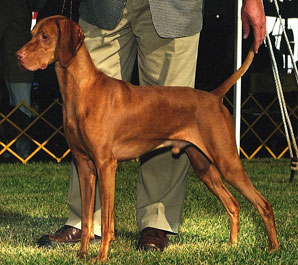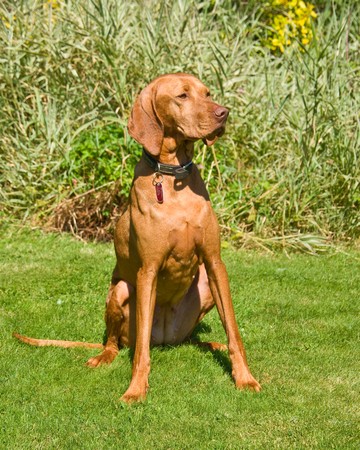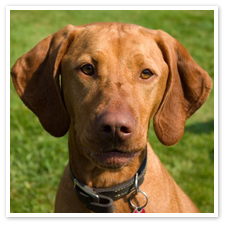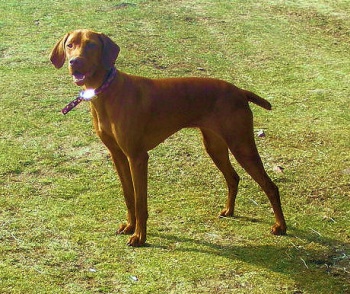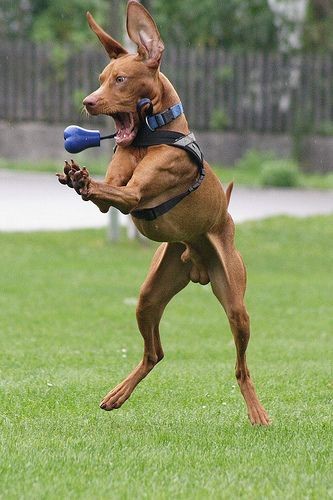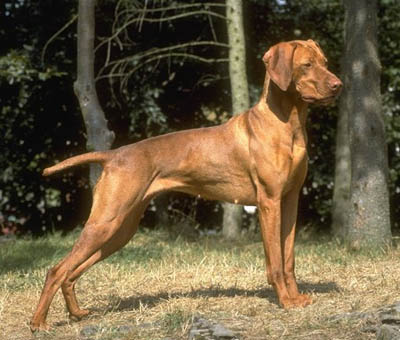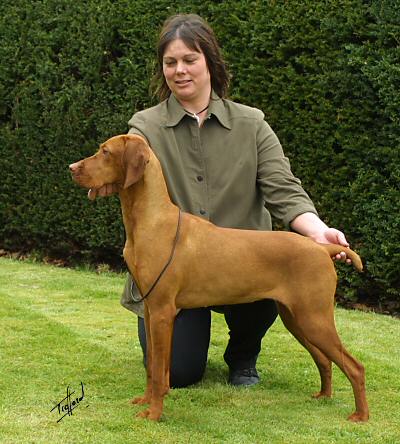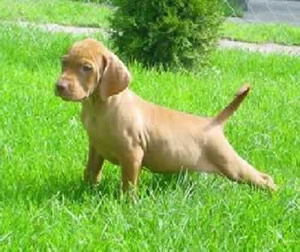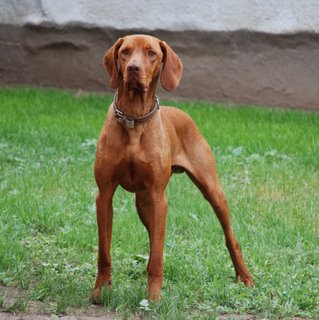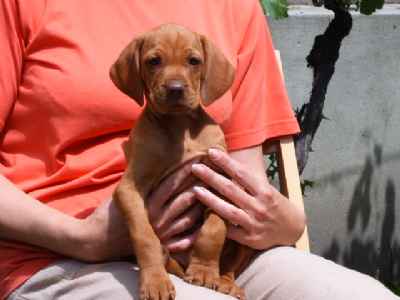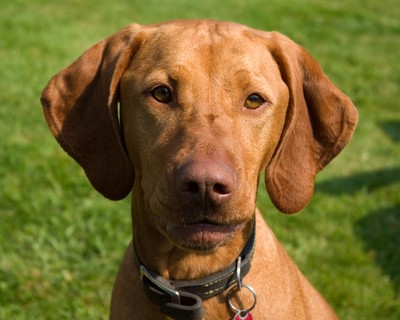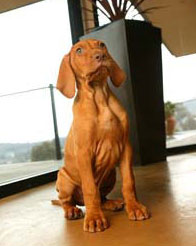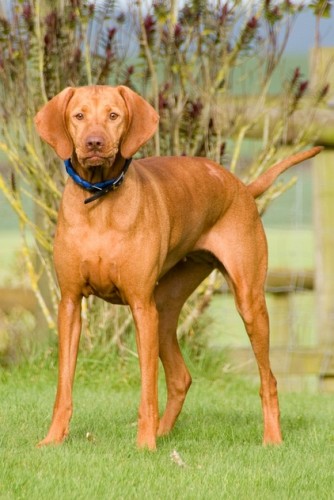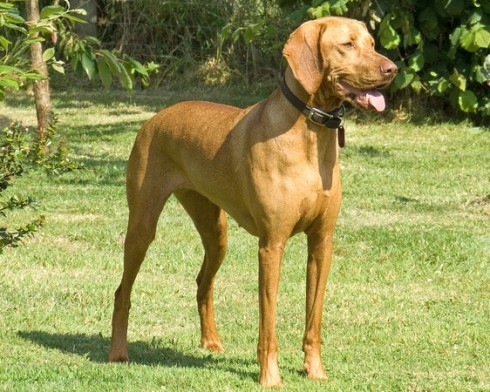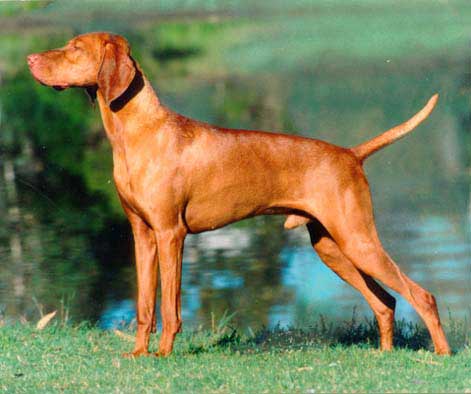Main Index
In Store
Our Web Store
Miniature Schnauzer Picture Gallery
Latest Dog Blogs
- What Are The Basic Commands To Train A Dog?
- PaySafe As The Most Popular Type Of Deposit
- Everything You Need To Know About Pet Sales
- Dogs Contribute To Our Physical And Mental Well Being
- How To Choose Where To Bet On Greyhounds In 2022
- Volunteer With Animals - How To Help Dogs Around The World
- Basic Understanding Of The House Edge
- Why You Should Get A Dog
- Top 20 Popular Dog Names Around The World
- Constipation in Dogs and How to Find Solutions
Hungarian Vizsla
Hungarian Vizsla Picture Gallery
Hungarian Vizsla Clubs/Associations
The Full Hungarian Vizsla Description
Vizslas have energy galore. Their owners will have fun keeping them busy. Vizslas are fun to train because they are eager to prove how much they love their owners. They are smart and learn quickly. They are also sensitive, so gentle corrections go a long way.
Did you know?
The Vizsla is also called a Hungarian Pointer.
At the end of World War I, the Vizsla was all but extinct.
So you want to own a Vizsla?
Vizslas are small enough to be good dogs for a city apartment, but remember like other sporting dogs they require daily exercise.
Vizsla's are sensitive dogs, devoted to those who treat them kindly and give them attention. The Vizsla is not very discriminating to who he shows affection, he loves everyone.
Indicative Breed Standard
General Appearance
Medium-sized, of distinguished appearance, robust and medium boned.
Characteristics
Lively, intelligent, obedient, sensitive, very affectionate and easily trained. Bred for hunting fur and feather, pointing and retrieving from land and water.
Temperament
Lively, gentle-mannered and demonstratively affectionate, fearless and with well developed protective instinct.
Head and Skull
Head lean and noble. Skull moderately wide between ears with median line down forehead and a moderate stop. Skull a little longer than muzzle. Muzzle, although tapering, well squared at the end. Nostrils well developed, broad and wide. Jaws strong and powerful. Lips covering jaws completely and neither loose nor pendulous. Nose brown.
Eyes
Neither deep nor prominent, of medium size, a shade darker in colour than coat. Slightly oval in shape, eyelids fitting tightly. Yellow or black eye undesirable.
Ears
Moderately low set, proportionately long with a thin skin and hanging down close to cheeks. Rounded ‘V’ shape; not fleshy.
Mouth
Sound and strong white teeth. Jaws strong with perfect, regular and complete scissor bite, i.e. upper teeth closely overlapping lower teeth and set square to the jaws. Full dentition desirable.
Neck
Strong, smooth and muscular; moderately long, arched and devoid of dewlap. Shoulders well laid and muscular, elbows close to body and straight, forearm long, pasterns upright.
Body
Back level, short, well muscled, withers high. Chest moderately broad and deep with prominent breast bone. Distance from withers to lowest part of chest equal to distance from chest to ground. Ribs well sprung and belly with a slight tuck-up beneath loin. Croup well muscled.
Hindquarters
Straight when viewed from rear, thighs well developed with moderate angulation, hocks well let down.
Feet
Rounded with toes short, arched and tight. Cat-like foot is required, hare foot undesirable. Nails short, strong and a shade darker in colour than coat, dewclaws should be removed.
Tail
Customarily docked. Docked: Customarily docked by one third of length. Moderately thick, rather low set. When moving carried horizontally. Undocked: Rather low set. Moderately thick, slightly curved. Tapering towards the end, reaching to hocks. When moving carried horizontally.
Gait/Movement
Graceful, elegant with a lively trot and ground-covering gallop.
Coat
Short, straight, dense, smooth and shiny, feeling greasy to the touch.
Colour
Russet gold, small white marks on chest and feet, though acceptable, undesirable.
Size
Height at withers: dogs: 57-64 cms (221/2-25 ins); bitches: 53-60 cms (21-2311/2 ins). Weight: 20-30 kgs (44-66 lbs).
About Our Article Directory
- Article
- 27 November 2010
- 2 comments
Canis lupus familiaris
- Breed Article
- 29 May 2010
- No comments
Quick Search
Donate
Latest Dog Pods
- Tips on How to Stop Your Dog from Biting
- Beware - Not All Advertised Dog Rescues Really Are! How Can You Know The Truth?
- Helpful Tips For Dog Obedience Problems
- How to Keep Dogs From Eating Poop
- Dog Grooming Tips - A General Overview of the Very Basics of Dog Grooming
- Recognising Different Types of Dog Obedience Problems
- 5 Important Tips On Feeding A Puppy


